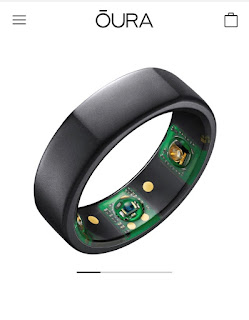The Everest Challenge is going well. Nine days into the 50 day adventure I have completed 6 hikes for a total of 7800 foot elevation. I am on track to finish the challenge in 16 more hikes if I can sustain the pace. I have been hiking the two mountains that surround Harpers Ferry and yesterday I thought I would mix in something different. George Washington State Park is located near Front Royal, VA and according to my AllTrails app had some high stuff to climb. The app nailed the trail, but it really did not describe the proliferation of rocks and technical aspects of traversing the debris fields. I thought I would hike part of the Signal Knob Trail and pick up 1200 or 1300 feet of elevation.
 |
The Trail, the orange strip on the rock lets you know
|
 |
| A lot of this |
I trail is narrow and just goes up rather slowly for about 3 miles without any let up on incline, no places to really rest or look around, the views are not that good due to the trees along the route. It took 80 minutes to climb 1444 feet and it took the same amount of time to return. The technical nature of the hike and the concentration required to traverse the continuous string of rocks prevented any speed increase on the downhill, which is really something new for me. There were a few section with some smoother trail, but they were way too rare to make for a pleasant hiking experience. This trail was your basic grind. There was lot of places to get injured.
 |
| My Bret Favre knee support |
I took a short cut on the return to cut off about 3/4 of a mile of rocks and I snagged my knee support on a stick and it was shredded! Time for a new knee support. By the way, the Bret Favre knee support really help the knee on the downhill stuff. The next day pain is really reduced.
Once I was finished, I rinsed off the blood on the nearby river and headed for home. I do not think I will try this route again, too many chances to get hurt and the feet and lower legs are just used up on all the rocks and various contact angles as you pick your way through the debris.









Comments
Post a Comment